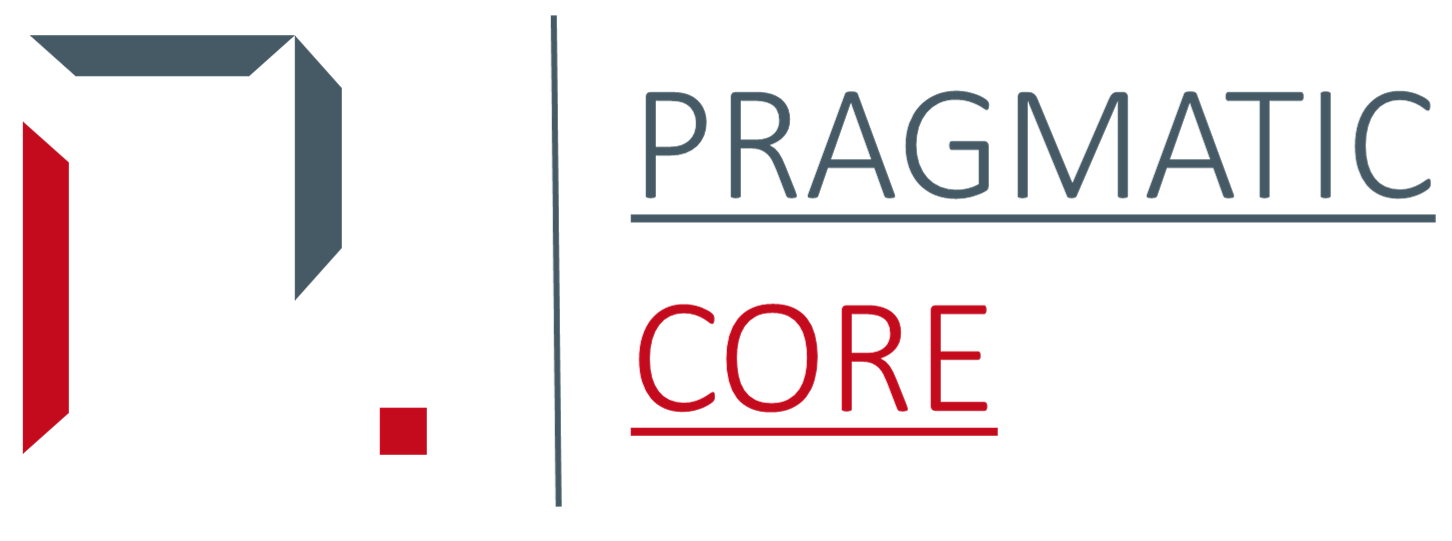Key Points:
- Many organizations face falling profit margins in today’s competitive business environment. Micro components of organizations can slowly reduce earnings, like, Inefficient processes, antiquated technology, lack of real-time data analysis, ethical concerns, and poor department communication.
- Legacy company methods, a one-size-fits-all approach, limited innovation investments, misaligned leadership goals, and change resistance can lower profit margins. Stagnant company strategies and complacent corporate cultures reduce profits.
- Focused on the elimination of these stinging issues, Pragmatic Core sheds light on to subjects SMEs, solopreneurs, and start-ups must manage for a sustainable journey.
A company’s long-term success and adaptability depend on its ability to keep its profit margins strong in today’s highly competitive and ever-changing business environment. Unfortunately, many businesses are struggling with contracting margins and are scrambling to find ways to regain lost profits.
The root causes behind diminishing profit margins are often complex and multifaceted. Some companies adopt a myopic perspective, concentrating solely on cost-cutting measures in the hope of safeguarding or boosting their margins. However, a singular focus on cost reduction is seldom an effective or sustainable solution. In reality, lost profitability often results from deep-seated inefficiencies within processes, management practices, innovation efforts, and even corporate culture. To fully rejuvenate profit margins, business leaders must gain granular insights into the operational, systemic, and talent-related issues that are negatively impacting the bottom line across the entire organization.
This extensive blog post will elucidate the often-overlooked micro and macro factors that contribute to financial inefficiency and imperceptibly erode profits over time. It will provide clear direction on how to enhance processes, management strategies, innovation projects, corporate culture, and the customer experience in order to counteract these profit-eroding issues. The end goal is to identify the root causes of profit loss so that businesses can adopt systemic changes that restore margins and ensure their long-term viability.
Micro Elements Undermining Profits
Microelements lurking within an organization can stealthily erode profits over time. These hidden niche processes, workflow inefficiencies, and management oversights gradually foster financial inefficiencies. Among the most common microelements that drain profits, one finds instances where costly inputs, materials, or resources are utilized when more cost-effective alternatives are available. Often, this inefficiency creeps into procurement processes that fail to leverage economies of scale or identify vendors with better pricing tiers.
Persistence of outdated legacy IT systems, machinery, and infrastructure instead of upgrading to more efficient, automated technology and platforms. These older systems not only drag down productivity but also impede overall efficiency. These systems additionally lead to a lack of real-time tracking and analysis of data related to operations, inventory, quality, and costs can lead to financial inefficiencies. The absence of visibility in this regard impedes early problem detection and resolution.
Inadequate individual and team accountability concerning budget management, continuous improvement, and cost containment also contribute to profit erosion. Without clear financial responsibilities, waste can proliferate unchecked. Furthermore, insufficient training and development for management and staff in cost management best practices, procedures, tools, and analytics can perpetuate suboptimal foresight.
Breakdowns in collaboration among various departments, including sales, marketing, engineering, production, logistics, finance, and leadership, can be a hidden source of profit leakage. Misalignment of goals and activities across these departments undermines financial optimization efforts.
Inadequate staffing, unclear responsibilities, and work overload in key roles within the organization can also contribute to profit erosion. Overworked teams are more prone to errors and hidden costs over time.
Underperforming marketing and sales teams struggling to attract new customers and accounts can negatively impact profits. Slow revenue growth places excessive pressure on profit margins, making it vital to address these issues.
In order to stay competitive, these failures push organizations to regularly review pricing models, product bundles, and service packages in light of shifting market demand, which actually requires better quality output. This oversight can result in a loss of competitive edge and damage the uniqueness of identity if the organization fails to adapt to evolving customer trends.
These micro issues, although seemingly inconspicuous, have the potential to compound over the years, inexorably siphoning off financial resources. However, with meticulous attention and a determined commitment to identifying and addressing these profit-draining problems, significant cost savings and margin recovery are attainable.
Macro Forces That Erode Margins
Outside the confines of an organization’s internal processes and teams, broader macro elements significantly impact financial health and margins. Among the most common external macro forces fostering financial inefficiencies is the presence of outdated overall business strategies that fail to prioritize profitability, cost management, productivity, and financial visibility. A lack of focus on clear profit objectives perpetually leaves these objectives unmet.
Another external macro force contributing to profit erosion is the neglect of differentiating product and service offerings, pricing tiers, and value delivery for specific market segments. A one-size-fits-all approach forsakes profitable customization and adaptation to varying customer needs.
Additionally, the scaling back of innovation investments, R&D projects, and new product development in favor of short-term cost-cutting measures is another detrimental external factor. This curtailment of innovation hampers the creation of game-changing offerings that could boost profit margins.
Conflicting visions and misaligned objectives across the executive leadership team constitute another external macro force. Mixed signals from the top undermine the development and execution of a cohesive financial strategy, ultimately impacting profitability.
A stagnant business model that loses relevance as markets, competitors, and customer expectations evolve is yet another factor eroding profit margins. Failure to adapt the value proposition to changing circumstances can result in lost revenue.
Furthermore, organizational complacency regarding the improvement of legacy processes, systems, tools, and policies is a significant external force fostering financial inefficiencies. Resistance to change obstructs the necessary evolution required for improved financial health.
An insular corporate culture that resists implementing industry best practices and benchmarking also contributes to profit erosion. Outdated assumptions perpetuate mediocrity, preventing the organization from achieving its full profit potential.
Lastly, an excessive short-term focus on cost reductions at the expense of investing in long-term capabilities, skills, and partnerships can lead to a further undermining of competitiveness. Pursuing illusory savings may seem beneficial in the short run but can have long-term detrimental effects.
These external macro forces, when combined with internal micro breakdowns, gradually erode profit margins over time. Nevertheless, with a rigorous assessment of higher-level market shifts and a renewed leadership vision, the tide can turn toward financial health, allowing organizations to safeguard and even enhance their profit margins.
Solutions to Recover Lost Margins
With a precise understanding of the macro and micro drivers of lost profitability, organizations can pursue multifaceted solutions:
1. Implement data-driven decision-making, predictive analytics, and financial modeling to optimize costs, overhead, inventory, and return on investment. Sophisticated analytics platforms can spot hidden waste drivers.
2. Adopt new automation tools, artificial intelligence, and process improvement frameworks like Lean Six Sigma to enhance efficiency, quality, and reliability in operations, logistics, and administration. Advanced systems save on labor, time, and overhead costs.
3. Re-engineer outdated processes using waste elimination, continuous improvement, and design thinking methodologies. Kaizen, TQM, and lean principles can strip away hidden inefficiencies.
4. Instill a culture of ownership, financial accountability, and achievement orientation at all levels to drive cost and budget management. Make financial goals meaningful to every employee.
5. Motivate innovation at all levels to improve offerings, enhance value, and boost profitability. Fresh perspectives on old problems are indispensable for creating breakthrough products and services.
6. Foster cross-departmental collaboration through project teams, informal networking, and job rotations. Breaking down disconnected silos that undermine financial optimization is essential.
7. Segment target customers and develop differentiated offerings and pricing tailored to each industry, niche, and buying profile. In the digital economy, one size does not fit all markets.
8. Continually monitor competitors and identify market trends early, then rapidly implement necessary pricing, service, quality, and experience adjustments. Avoid complacency and maintain competitive value.
By adopting a holistic approach that transcends organizational boundaries to address both cultural and technical drivers of financial underperformance, companies can enhance profitability from the ground up. The payoff will be recovered margins, improved profitability, and the capacity to confidently invest in future growth.
To conclude, in today’s uncertain business climate, declining profit margins rank among the top threats faced by companies across industries. While temporary cost-cutting measures can provide short-term relief, they do not resolve the deeper issues of financial underperformance.
By adopting a systemic approach to diagnosing their unique profitability challenges, leaders can trace poor margins back to core inefficiencies in processes, management practices, innovation, company culture, and adaptation to market shifts. The most successful companies combine rigorous data analysis, management discipline, and change leadership to drive financial performance improvements from the bottom up.
Key takeaways include:
> Lost profitability often stems from micro inefficiencies in workflows, technology, data analytics, staffing, and cross-departmental coordination. Tiny hidden problems aggregate into substantial margin declines over the years.
> Macro forces such as outdated strategy, lack of innovation, resistance to change, and insufficient customer insights also erode margins. Leaders must keep their strategies, business models, and value delivery evolving.
> Blind cost-cutting typically backfires or provides temporary relief at best. To fully recover margins, address the underlying structural and cultural sources of financial inertia across the organization.
> Implement continuous improvement programs and advanced analytics platforms to inject financial visibility, ownership, and urgency into operations and overhead spending organization-wide.
> Foster a culture of ideas, financial accountability, and achievement orientation among employees at all levels. This drives innovation and optimization from the bottom up.
> Promote collaboration across boundaries to break down silos that inhibit profitable synergies. Bring teams together to identify hidden margin drivers.
> Segment target markets and develop tailored offerings, pricing tiers, and customer experiences. In the digital economy, one size does not fit all markets.
> Track competitors obsessively and keep value, quality, and capabilities competitive. Complacency is the enemy of profitability in fast-changing markets.
By cultivating a culture of measurement, transparency, accountability, and innovation, companies can challenge outdated assumptions and behavioral patterns that lead to financial underperformance. Margin recovery is an achievable goal for leaders willing to critically examine their business and address the true underlying drivers that hold their organization back. However, sustainable profits require making systemic operational and cultural changes, not just applying temporary financial band-aids.


